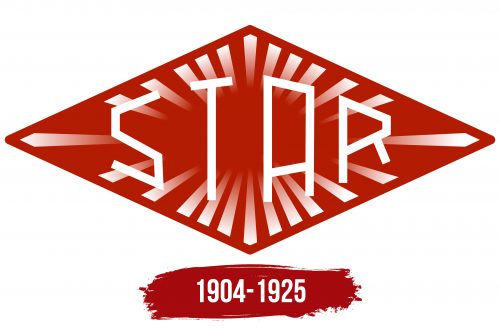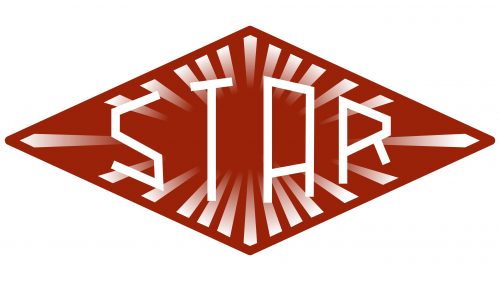 Societa Torinese Automobili Rapid Logo PNG
Societa Torinese Automobili Rapid Logo PNG
Like a true star, the Societa Torinese Automobili Rapid logo shone brightly for a brief time in the automotive firmament before its brilliance faded, delighting enthusiasts of luxury cars. The emblem reflects this fading glow, showcasing the brightness of once-popular vehicles.
Societa Torinese Automobili Rapid: Brand overview
The Torinese Automobile Society, founded in Turin in 1904, also known as S.T.A.R. or just the company, was an Italian automotive manufacturer. A group of businesspeople and engineers founded the company because they recognized the promise in the quickly growing Italian automobile sector in the early 20th century.
Giovanni Battista Ceriseto, Luigi Martino, and Guido Fornaca were the company’s founders. Their varied backgrounds in engineering and business allowed them to establish a business that could compete in the burgeoning automobile industry.
The first automobile was unveiled in 1905. It was a compact passenger car with an 8-horsepower single-cylinder engine. Italy’s early drivers liked the car due to its straightforward design and dependability.
Over the ensuing years, the company broadened its range of products. A model with a two-cylinder engine that could produce twelve horsepower was first released in 1906. A more potent model with a four-cylinder engine was then released in 1907.
The business soon established a reputation for building dependable, high-quality automobiles. The company aggressively competed in several of the era’s auto events, exhibiting its technological prowess and promoting the brand.
In 1908, the company debuted the 10/12 HP type, its first sports car. With its 1.8-liter four-cylinder engine, this car could reach 80 km/h, which was fast for the period.
The company experienced growth and expansion in the 1910s. The business started producing more cars and exporting them to other European nations. The 15/20 HP model, first released in 1912, became one of the most popular in the company’s history.
However, like many other car firms, World War I negatively affected the company’s activities (1914–1918). After drastically cutting back on the production of civilian cars, the business started making military hardware and components.
The company encountered difficulties starting up civilian car manufacturing after the war. Italy’s economy was struggling, and the country’s car industry was becoming more competitive.
In 1921, the company unveiled a new model called the 20/30 HP to help it regain its market share. This automobile had better mechanical specs and a contemporary design.
Despite these initiatives, the company’s financial status remained precarious. The business struggled to attract capital for new model development and manufacturing modernization.
In 1923, the company filed for bankruptcy. After failing to attract investors or buyers, the business stopped producing automobiles completely.
Even though the company only manufactured a small number of vehicles, it had an impact on Italian auto history. Today, several surviving examples are priceless collector’s artifacts that take us back to the early years of Italian automobile manufacture.
Meaning and History
What is Societa Torinese Automobili Rapid?
This was an Italian automaker based in Turin. The company specializes in creating affordable compact cars for urban driving. Due to their small size, fuel efficiency, and cost, the brand was popular among city dwellers and those seeking practical and affordable transportation. The company focused on producing cars with reliable and enjoyable technical features that could also easily maneuver in congested metropolitan areas. Despite its brief career in the automotive business, the company managed to add diversity to the Italian automobile industry.
1904 – 1925
The Italian luxury car manufacturer chose an extravagant logo with a symbolic name. This is because the long Italian phrase “Societa Torinese Automobili Rapid” was shortened to the English acronym “STAR.” This brevity played a positive role, as the name naturally evoked a creative concept, with the image of a star being incredibly multifaceted, especially in branding.
The lettering was done in a geometric font with angular strokes, making the letters appear like bent rods. The two middle glyphs were tall and large, while the sides were short and small. This design choice ensured the text perfectly matched the horizontal diamond shape with a wide center and narrow edges. Overall, the font resembled elegant Greek patterns. It was uppercase and sans-serif.
The white letters looked harmonious on a rich red background interlaced with similar white stripes. Four of these stripes resembled directional arrows because they were pointed at the ends: right, left, top, and bottom. The tops of the remaining glyphs were smoothly cut.
The lines extended from the center and directed toward the edges, drawing attention to the word “STAR.” They were of medium thickness and had a slight gradient, allowing the designers to create the effect of radiating rays. The result was a futuristic style that perfectly emphasized the exclusivity of luxury cars.




